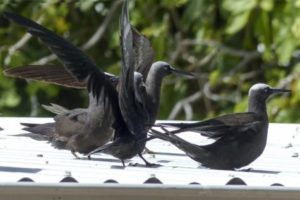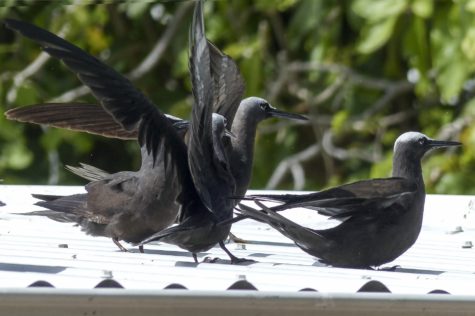MENORCA, Spain — Magnetic fields, genetic memory, and star maps have all been proposed as explanations for the mysterious ability of some birds to navigate featureless expanses of open ocean.
Following a new study, researchers from some of the world’s top universities have found the best explanation doesn’t seem to be so esoteric. Turns out, the answer was right under their nose all along.
“It will be very difficult in the future to argue that olfaction is not involved in long-distance oceanic navigation in birds,” says Oxford University doctoral candidate Oliver Paget of the study’s groundbreaking results in a press release.

That is to say, their latest study confirms it is indeed a keen sense of smell that is likely the main force behind bird’s seemingly magical way-finding ability at sea.
“Navigation over the ocean is probably the extreme challenge for birds, given the long distances covered, the changing environment, and the lack of stable landmarks. Previous experiments have focused on the physical displacement of birds, combined with some form of sensory manipulation such as magnetic or olfactory deprivation,” Paget explains. “Evidence from these experiments has suggested that removing a bird’s sense of smell impairs homing, whereas disruption of the magnetic sense has yielded inconclusive results.”
But, Paget says, even though earlier studies pointed to the importance of smell, critics questioned if birds would behave in the same way had they not been artificially displaced in those experiments. He said critics of the smell theory also argued that experiments relying on removing a bird’s sense of smell might be just indirectly affecting their navigation — by decreasing their motivation or ability to forage.
To counter these critics, Paget and an international team of researchers turned to previously unavailable technology to finally prove the smell theory by studying birds in a more natural way.
“This heralds a whole new era of work in which careful track analysis of free-ranging movements, with and without experimental interventions, can provide inferences about the underlying behavioural mechanisms of navigation,” says study senior author Tim Guilford, Professor of Animal Behaviour and leader of the Oxford Navigation Group in Oxford’s Department of Zoology. “Precision on-board tracking technology and new analytical methods, too computationally heavy to have been possible in the past, have made this feasible.”
Making use of such tiny tracking devices, the researchers in this new experiment were able to closely observe the movements and behavior of 32 shearwaters off the coast of Menorca.
The scientists started by dividing the birds into three groups, one group made temporarily unable to smell with zinc sulphate, another group carrying small magnets, and an untouched control group.
They were then fitted with miniature GPS loggers and left to go about their life among the rocky crevices and crags of the Menorcan coast. This set the experiment apart from others, rather than being displaced, the birds were tracked as they went about their normal daily errands of gathering food and taking care of their families.
Seemingly unbothered by the tiny GPS devices, magnets, or temporary lack of smell, all the birds gained weight as they successfully hunted out food and traded off nest-sitting duty with their partners.
The results of the experiment came when the birds with no sense of smell decided to make trips to distant foraging grounds. Once out of sight of land, the smell-lacking birds “embarked on curiously straight but poorly oriented flights across the ocean, as if following a compass bearing away from the foraging grounds without being able to update their position.”
The control group and magnet group showed no such problems.
Once back in sight of land, the smell-lacking birds were again able to navigate normally. The researchers said this seems to show they are also able to visually use landmarks to find their way.
‘To the best of our knowledge, this is the first study that follows free-ranging foraging trips in sensorily manipulated birds,” Guilford says.
The research team also included scientists from the universities of Pisa and Barcelona. The findings were published this week in the journal Scientific Reports.

Comments
Comments are closed.